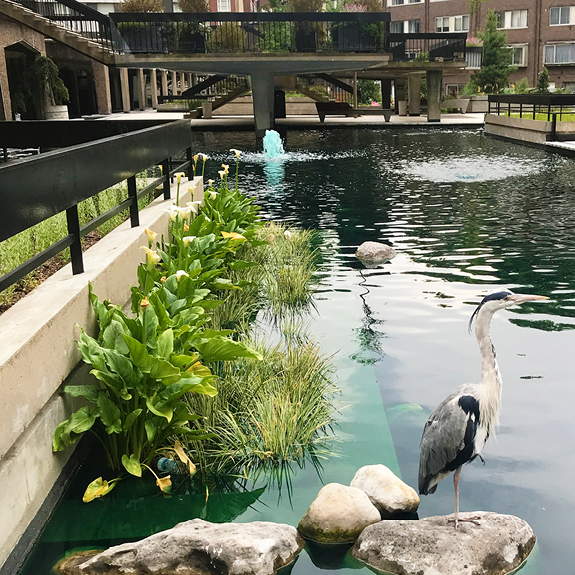Beauty and the Beast
Is Brutalism beautiful? Or is it a concrete beast that stains our landscape? Beauty will always be subjective and Brutalism will continue to elicit strong reactions, but demolishing these urban brutes is not the answer. We must restore and breathe new life into these ageing structures; landscape architects are the heroes taming the beast.
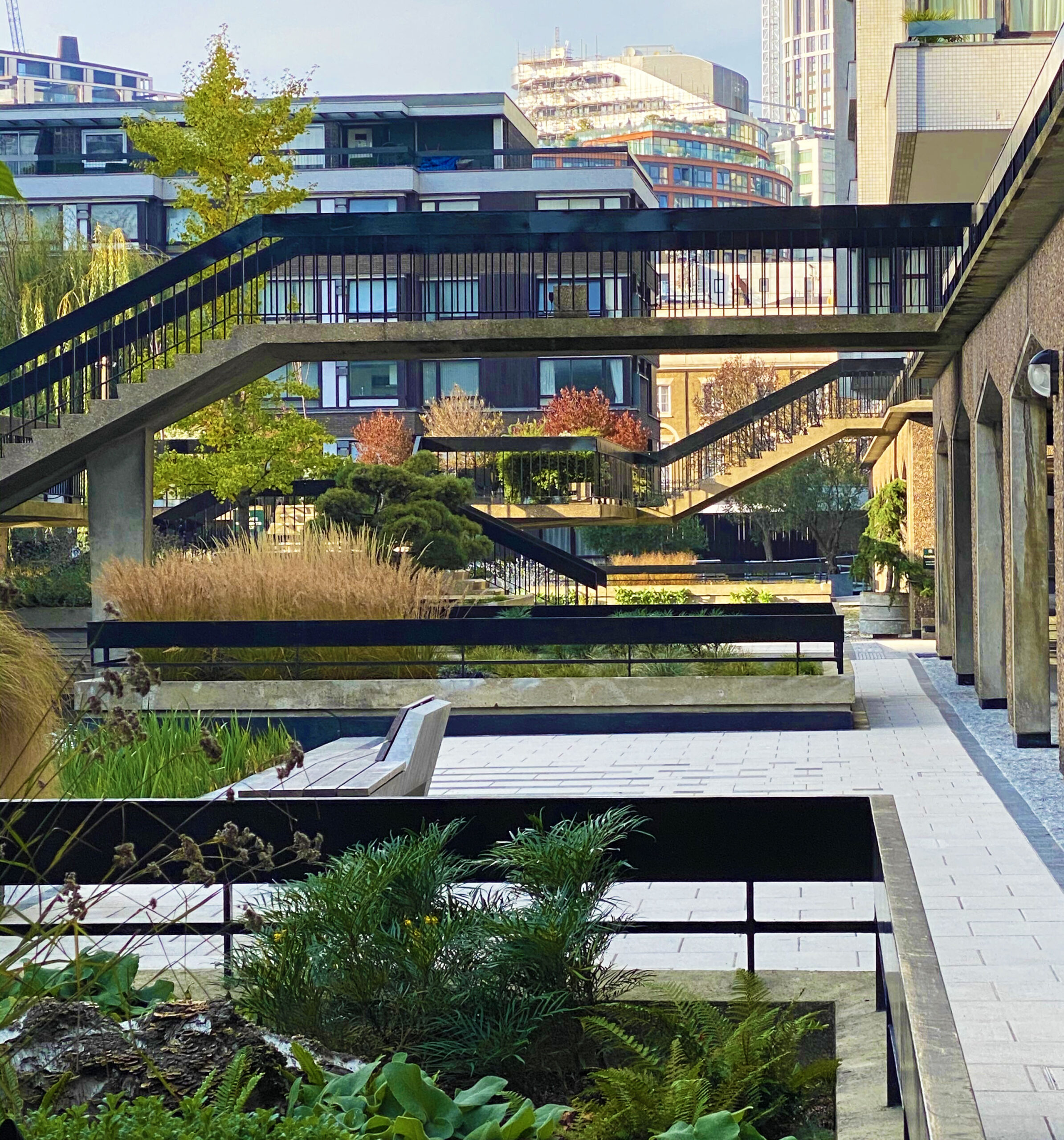
The Water Gardens

Royal National Theatre
Construction Photography / Avalon / Getty Image
SHARE
Developed in response to the post-World War II housing crisis, brutalism was celebrated for its starkness, simplicity and lack of unnecessary adornment. However, by the 1970s, the architectural movement began to fall from grace as the public felt that it didn’t provide uplifting icons of post-war development.
Today, Brutalism is experiencing a revival, in part due to a trend in celebrating raw materials making concrete a hit on social media, but also because of how these, often neglected, concrete spaces are being transformed by landscape architects. The Barbican in London, for example, has become a sensation on Instagram thanks in part to the phenomenal steppe planting by Nigel Dunnett, Professor of Planting Design and Urban Horticulture at the University of Sheffield.
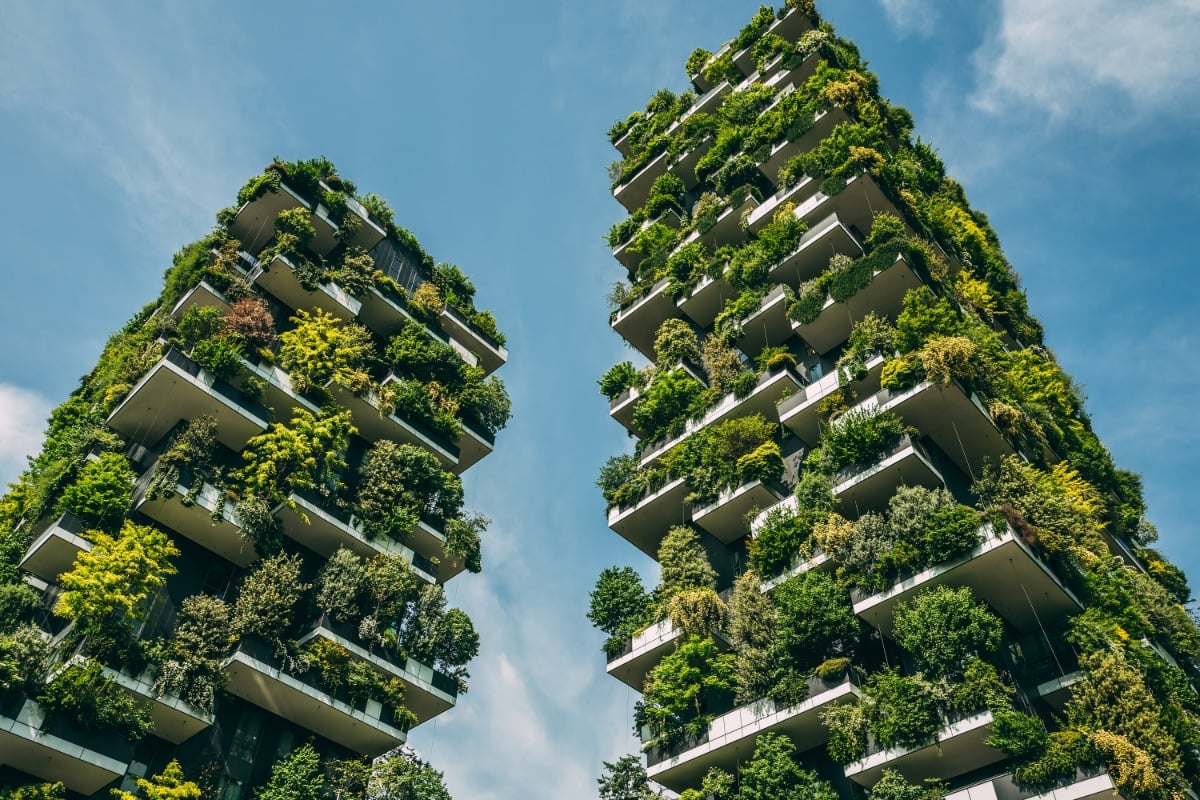
Bosco Verticale
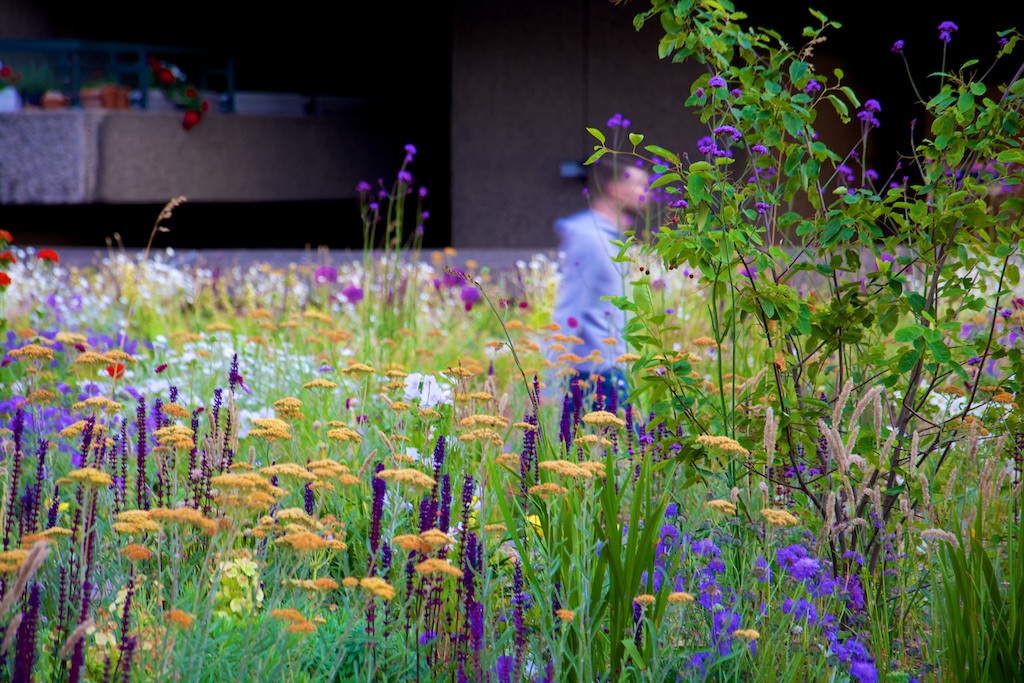
Planting at the Barbican
Other examples of transformed Brutalist spaces include Thamesmead in London, where Dr Phil Askew, Director of Landscape and Placemaking at Peabody led the regeneration of a 1960s social housing estate. In Milan, Stefano Boeri created Bosco Verticale, two residential towers flanked on all sides by a vertical forest supporting an impressive 800 trees. And in London's Hyde Park Estate, Cristina Refolo transformed The Water Gardens as part of the restoration project instructed by the Church Commissioners
for England.
The Water Gardens
Built in 1966, The
Water Gardens is a Brutalist 5,000 sqm private communal courtyard podium deck
that serves 200 apartments. In 2018 the Church Commissioners for England engaged R-LA to revive the site which, after 50 years, was naturally suffering from water leaking into the
undercroft carpark.
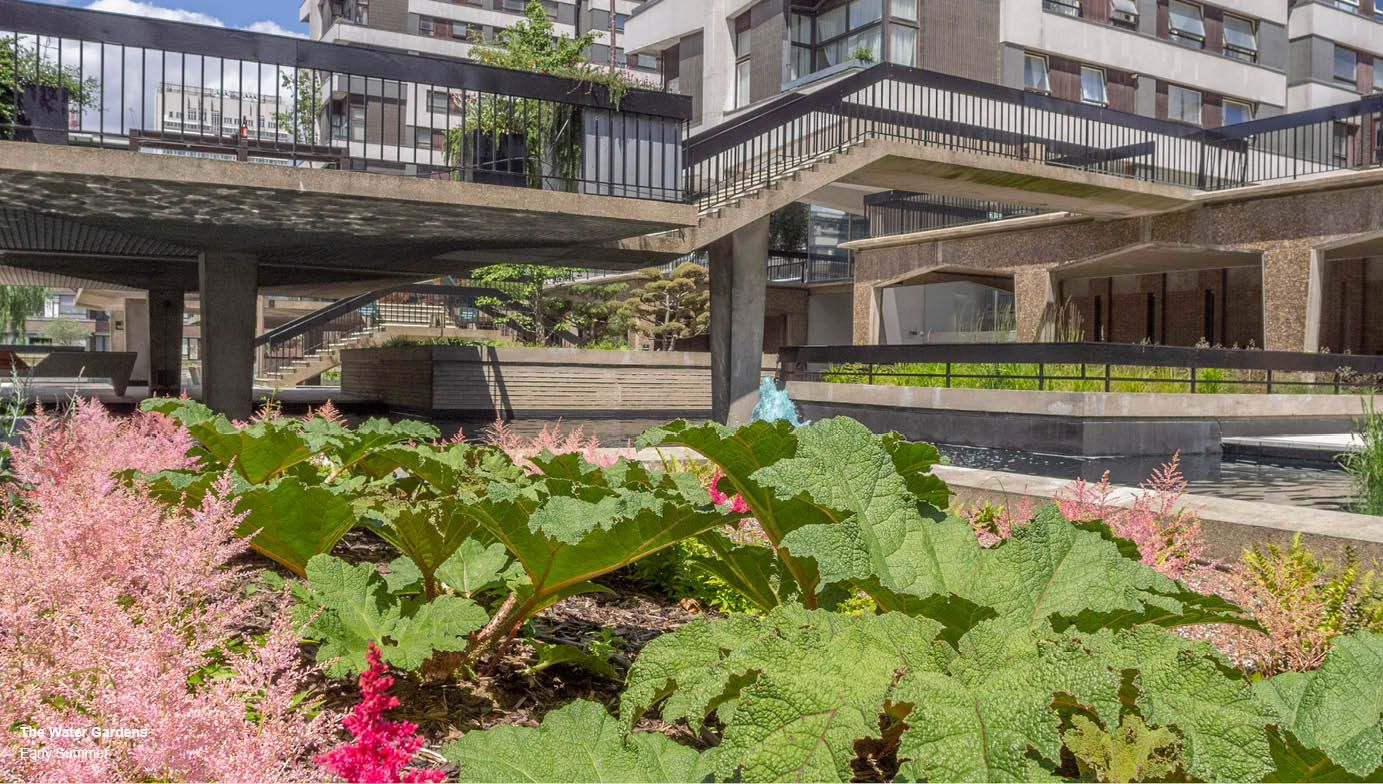
The Water Gardens
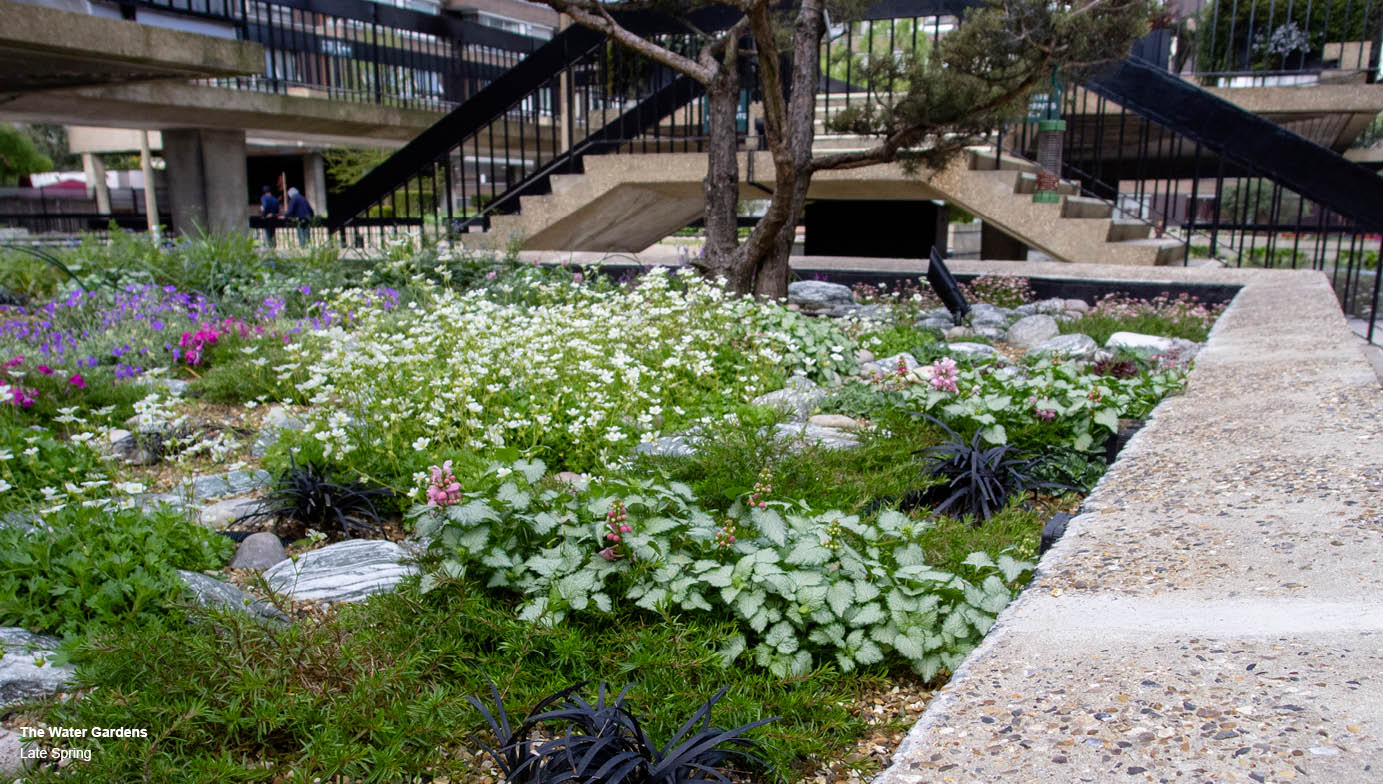
To allow for the restoration to take place, the whole podium
deck had to be stripped bare and all the existing vegetation removed. Not only did this expose that the whole system
had existed on bare concrete with no waterproofing for 50 years but it also
uncovered a long-forgotten original SuDS design where the interconnectivity
between the pond and the planters had been lost.
The project restored this connectivity and
introduced a rainwater harvesting irrigation system under the paving. The
gardens now maintain more than 33,000 new seasonal plants and 25 trees while
aquatic planting thrives in the large ponds hosting more than 400 fish.
Whilst on the surface The Water Gardens looks like a mini
replica of
the Barbican, The Water Gardens boast a truly brutalist garden,
surrounded by modernist buildings whereas the Barbican is made up of brutalist
buildings surrounding a modernist garden. Brutalism takes the
malleability of concrete and extends it into new architectural dynamic forms. R-LA’s
design approach was inspired by the interplay of the static energy of the
Brutalist concrete with the kinetic energy of the water. The paving design is
expressed through increasingly regular wave patterns, progressing from chaos to
order as the observer moves through the space. The planting echoes this
transition.
Completed in 2020, the Water Gardens project has won multiple
awards for its SuDS, horticulture and placemaking and
has since been added to the National Heritage List for England as a grade II listed
post-war landscape.
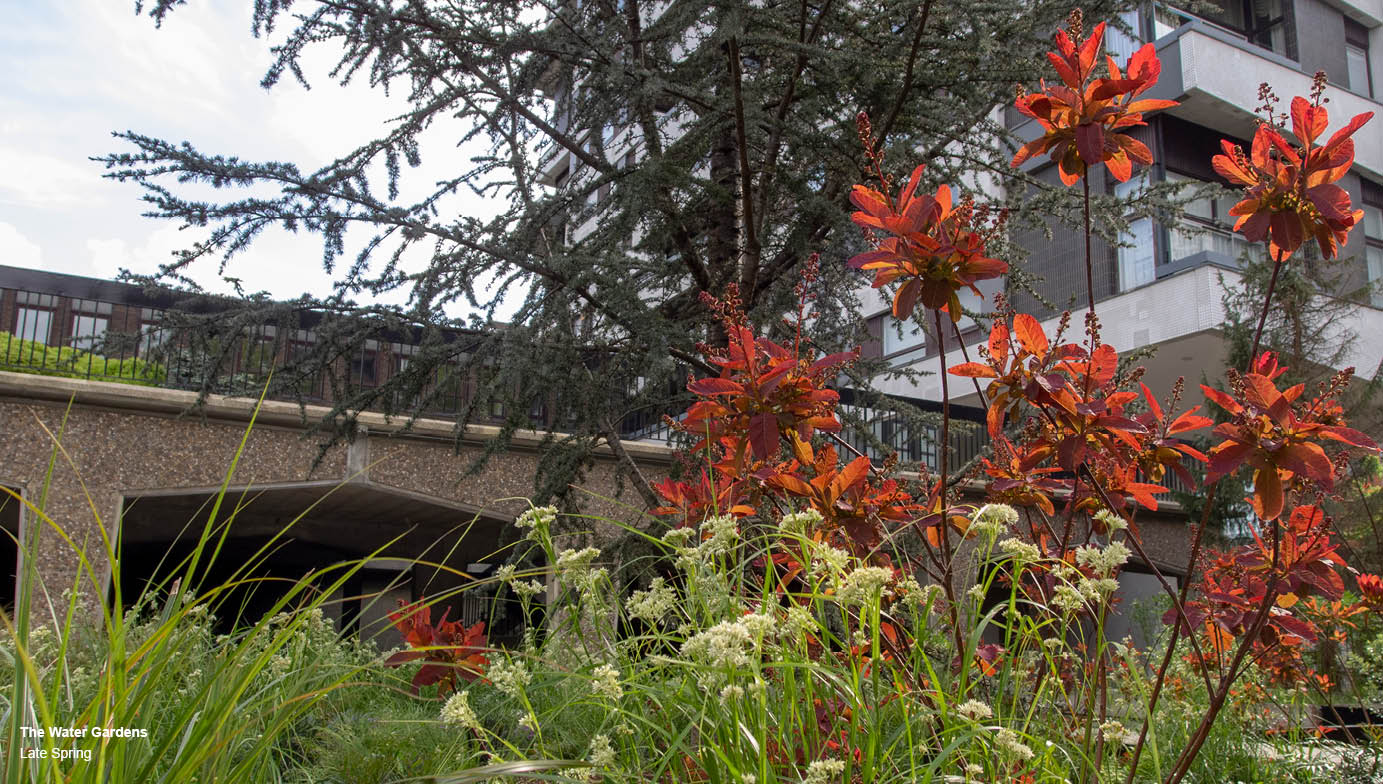

Twenty-First Century Ogre
The true beast of
our age is the carbon footprint we leave behind. Concrete is the most widely
used man-made material in existence and cement, the key ingredient to concrete,
accounts for roughly 8% of the world’s CO2 emissions (Chatham House, 2018). Given
the amount of energy embodied in the existing stock of concrete-framed
buildings, it is more important than ever to preserve, retrofit and revive what
is already there, rather than demolishing and adding to the landfill heap.
By adding green and
blue infrastructure to these existing concrete structures across the globe, a
new wave of brutalism evolves that is sustainable. Biophilic design offsets
rigid geometric forms, reduces the urban heat island effect and creates a
healthy environment for people and nature to thrive which in turn creates a
great place to live. Loath or love brutalism, one thing is clear,
architecture needs biodiversity and the people leading the green revolution are
landscape architects.

